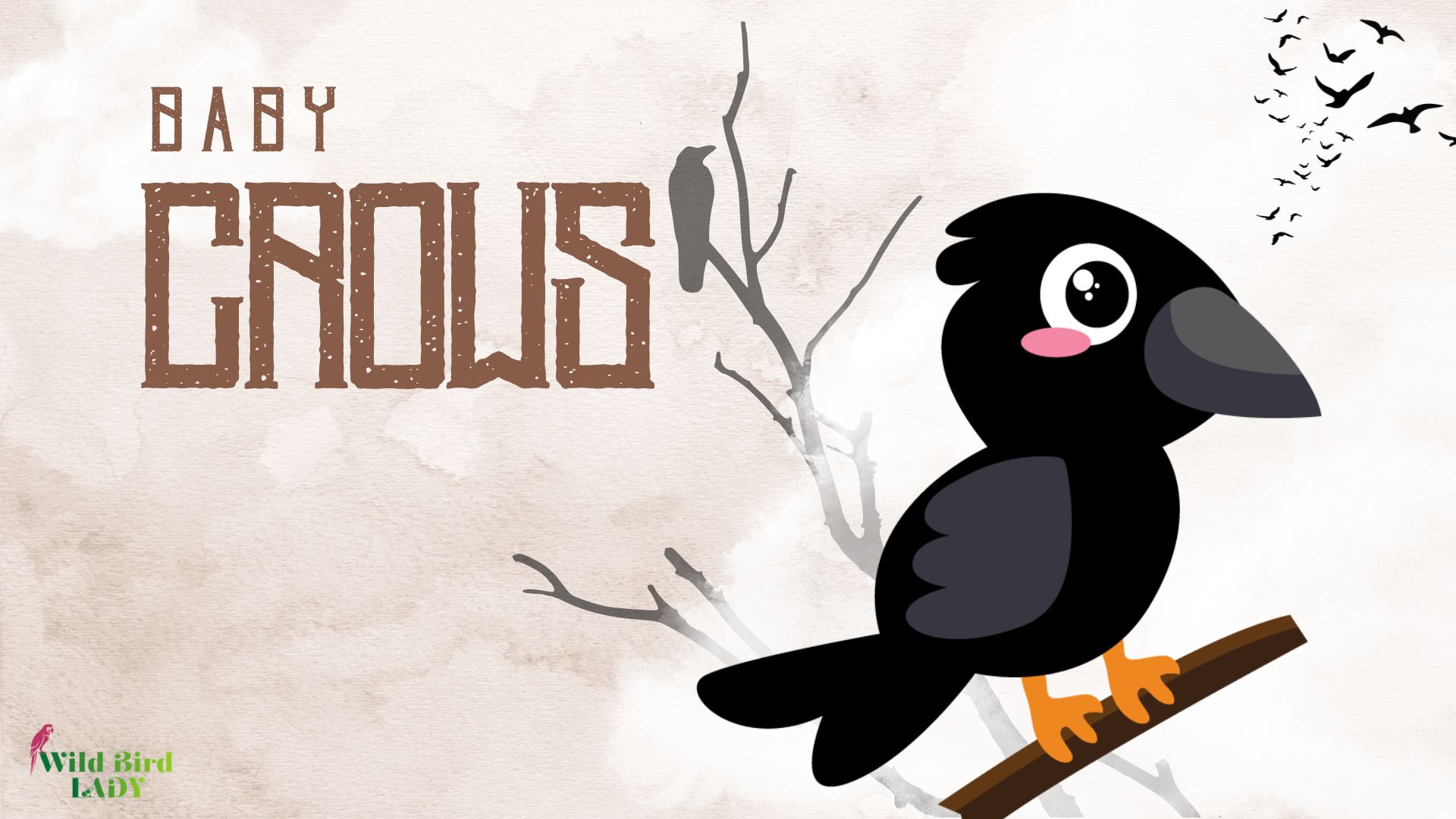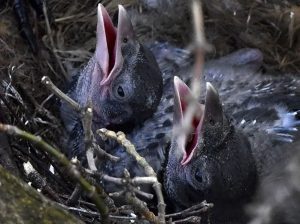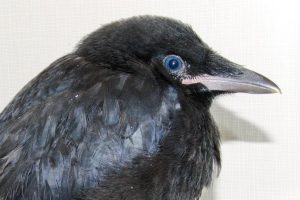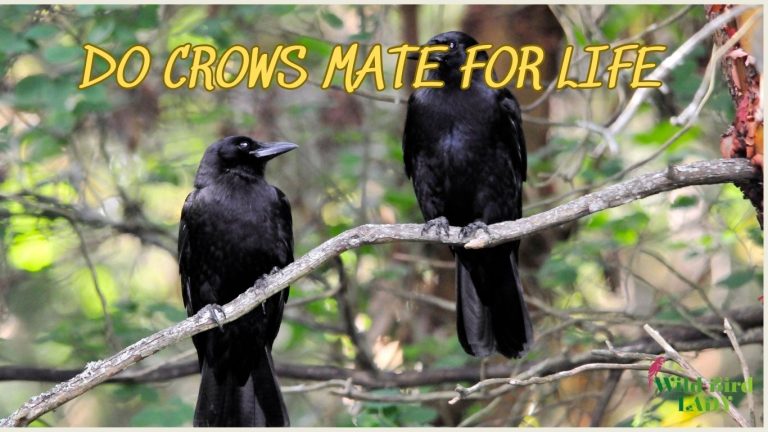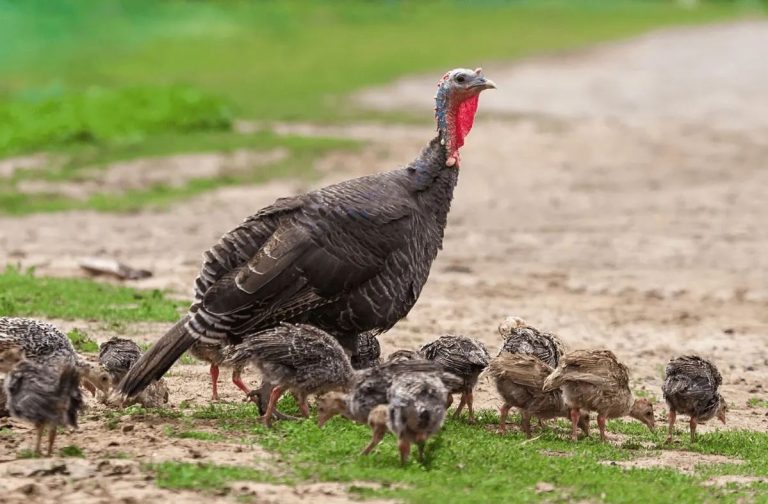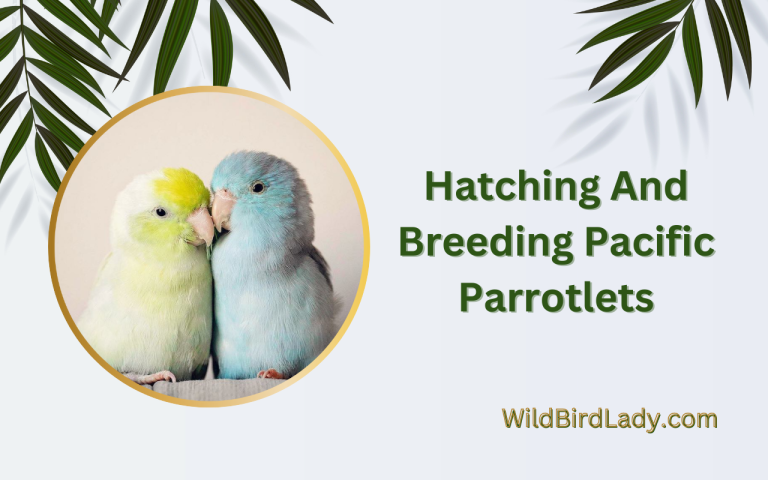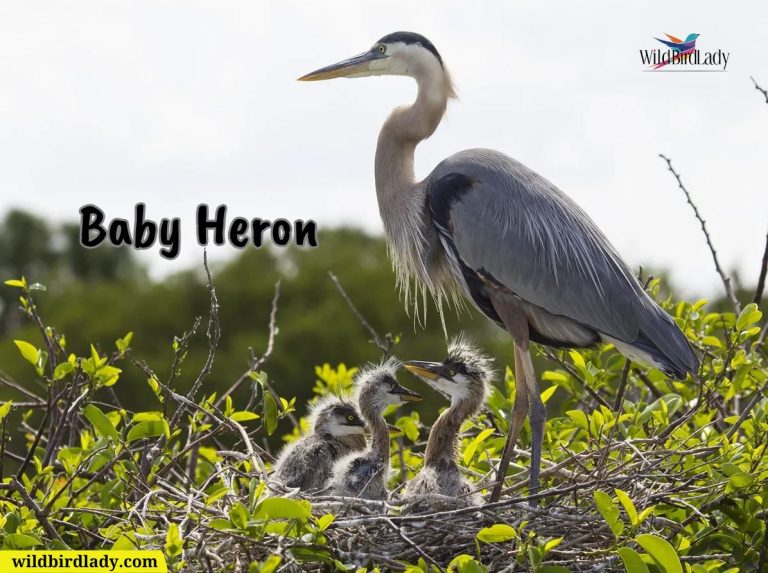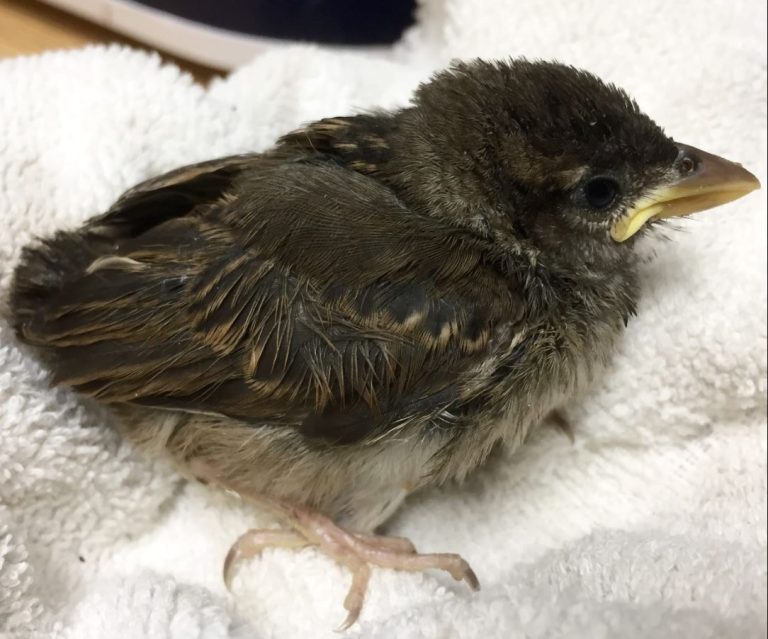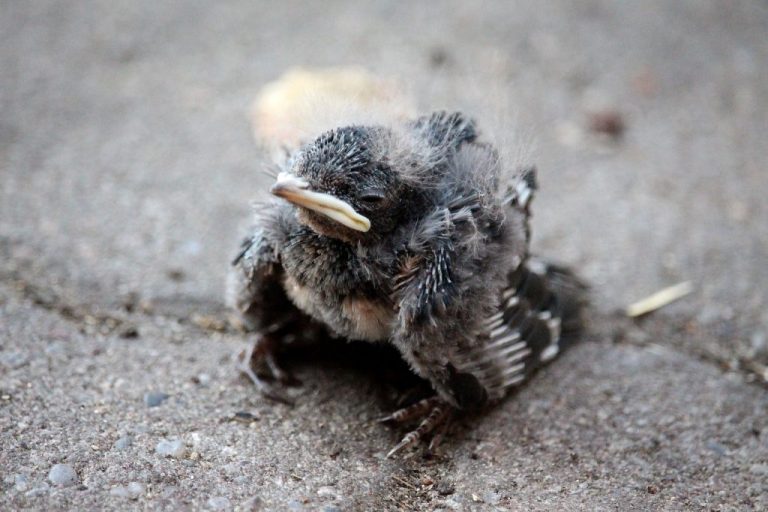Baby Crows: 9 Surprising Facts About These Clever Little Corvids
By Rifat Ahmed – Birdwatcher with 13 Years of Experience
There’s something deeply captivating about crows. Maybe it’s their intelligence, their social complexity, or the way they strut around with unmistakable confidence. But have you ever stopped to wonder about baby crows?
Over the past 13 years of birdwatching across North America, I’ve had the rare pleasure of observing these clever little corvids from the moment they hatch to their bold first flights. Today, I’m excited to share some surprising facts about baby crows—facts that will change the way you see these often misunderstood birds.
Let’s dive in.
1. Baby Crows Are Born Completely Helpless
Like many songbirds, baby crows hatch naked, blind, and utterly dependent on their parents. The scientific term for this is altricial—meaning they require extensive parental care.
When American Crow chicks (Corvus brachyrhynchos) emerge from their eggs, they weigh just a few grams. Their eyes are shut, their bodies are featherless, and they rely on the warmth and feeding provided by their parents and older siblings.
🐣 According to All About Birds, crows lay 3–9 eggs per clutch, and both parents participate in raising the young.
Their nests, usually built high in tall trees, are well-insulated with twigs, bark, grass, and even bits of human debris—a testament to their adaptability.
2. They Stay in the Nest for Nearly 5 Weeks
Baby crows have a much longer nestling period than most other songbirds. While robins or sparrows might fledge in 10–15 days, crow chicks stay in the nest for 35–45 days!
This extended stay allows their brains and bodies to develop more fully. After all, they’re preparing for a life of high intelligence and complex social interaction.
From my own experience, I’ve watched baby crows gradually grow from fuzzy gray puffballs into sleek black juveniles. You can even distinguish them by their blue eyes (more on that in the next point).
3. Baby Crows Have Blue Eyes and Pink Mouths
One of the most visually striking facts about baby crows is their eye and mouth color.
While adults have black eyes and black mouths, baby crows start with blue-gray eyes and pinkish mouths. These colors slowly change as they grow older.
Why is this important?
These features help adult crows recognize which youngsters still need feeding. The bright pink gape and pale eye ring act as visual cues during the chick’s begging displays.
Eventually, by the time they leave the nest, their eyes darken and the mouth lining becomes black, making them look more like adults.
4. They Don’t Leave the Family After Fledging
Here’s something truly fascinating: baby crows don’t just fly off and start new lives once they leave the nest. In fact, they often stay with their parents for years.
Yes, crows live in extended family groups, and fledglings from previous years may stick around to help raise new babies.
This cooperative breeding behavior is rare among birds but very common in crows. It means that juvenile crows act as babysitters, helping feed and protect their younger siblings.
📚 Research from the Cornell Lab of Ornithology notes that American Crows often form tight-knit family groups of 2–15 individuals that persist year-round. (source)
5. Baby Crows Learn Through Play
Watch a group of juvenile crows in a field or on a rooftop, and you might catch them sliding down snowbanks, tossing sticks, or even playing “catch” with each other.
This playful behavior isn’t just for fun (although it sure looks like it). It’s a form of learning.
Crows are some of the most intelligent birds on Earth, and just like human children, they learn essential life skills through trial, error, and experimentation.
I once observed a young crow repeatedly dropping a piece of bark into a puddle, then retrieving it. Was it a game or a food test? Either way, it shows the creativity of these young minds.
6. Baby Crows Have a Unique Call That Sounds Like a Nasal “Waaah!”
If you’ve ever heard a baby crow beg for food, it’s unforgettable.
Their begging call is a loud, nasal “Waaah! Waaah!”—very different from the sharp “Caw!” of adults. It’s almost comical to hear in the wild.
🔊 Listen to a baby crow call here on the Macaulay Library:
This distinctive call serves two purposes:
- It alerts the parents (and helpers) that the chick is hungry.
- It helps the family group locate and recognize the fledgling.
This sound can go on for weeks after fledging, and the chick may continue to follow parents around, begging and vocalizing until they’re fully independent.
7. They Grow Fast—Really Fast
From helpless hatchlings to agile fliers, baby crows develop incredibly quickly.
- Week 1: Eyes begin to open, down feathers appear.
- Week 2–3: Pinfeathers emerge, chicks start stretching and flapping.
- Week 4: Feathers fill in, and wings strengthen.
- Week 5–6: Fledging time! Chicks leave the nest and start hopping around awkwardly.
Within just 6 weeks, they go from motionless puffballs to coordinated fliers navigating tree canopies. Their coordination is impressive, especially considering how large they are compared to other songbirds.
8. They Form Strong Bonds with Their Siblings
I’ve always been fascinated by the social lives of crows, and baby crows are no exception.
From a young age, they begin forming strong social bonds, especially with their siblings. I’ve seen groups of fledglings huddle together, preen each other, and share food scraps.
This early social development is crucial because crows rely heavily on cooperation throughout their lives:
- Foraging in groups
- Warning of predators
- Defending territories
- Raising young together
Crows that learn to cooperate young are better equipped to thrive as adults.
9. Baby Crows Are Protected by the Whole Neighborhood
One of the most awe-inspiring moments I ever witnessed was when a hawk flew too close to a crow nest.
Within seconds, five adult crows came screaming in from different directions to chase it away. These weren’t just the parents—they were likely older siblings or even unrelated crows from the neighborhood.
This phenomenon, known as mobbing, is a defensive strategy where multiple birds team up against a predator.
Crows fiercely protect their babies. If you see a ruckus of cawing crows harassing a hawk or owl, chances are a nest is nearby.
Bonus: Baby Crows Are Often Mistaken for Other Birds
Many people misidentify baby crows—especially fledglings—as other black birds like grackles, starlings, or even ravens.
Here’s how to tell them apart:
- Baby crows are chunky, with short tails and big beaks.
- Ravens are larger, with wedge-shaped tails and deeper voices.
- Grackles have longer tails and a more iridescent sheen.
Pay close attention to the begging call and blue eyes, which are dead giveaways for a juvenile crow.
Frequently Asked Questions About Baby Crows
1. What do baby crows look like?
Baby crows are born naked with closed eyes and pink mouths. As they grow, they develop fluffy gray down feathers, blue-gray eyes, and eventually black juvenile feathers before fledging.
2. What do baby crows eat?
Baby crows are fed a varied diet by their parents, including insects, small animals, seeds, and food scraps. They rely completely on adults (and sometimes older siblings) for food during their first several weeks.
3. How long do baby crows stay with their parents?
Unlike many birds, baby crows often stay with their parents for up to two years. During this time, they learn social skills, help raise younger siblings, and integrate into the family group.
4. Do baby crows make noise?
Yes! Baby crows have a unique, nasal “Waaah!” sound used to beg for food. It’s very different from the harsh “Caw!” of adult crows.
🎧 Listen to the sound here on Macaulay Library
5. Do crows take care of their babies?
Absolutely. Crows are among the most attentive bird parents. Both male and female crows—and often older siblings—help feed, protect, and raise the young in a system known as cooperative breeding.
6. Are baby crows smart?
Yes, even as fledglings, baby crows show early signs of intelligence. They play, experiment with objects, and learn by watching adults. These behaviors are part of why crows are considered some of the smartest birds on Earth.
7. Where can I find baby crows?
Baby crows are typically found in high tree nests during the spring and early summer. After they fledge (around 5 weeks), you may see them hopping around parks, woodlands, or suburban neighborhoods—usually accompanied by adults.
8. Do baby crows return to the nest the next year?
While baby crows don’t return to the nest to live, they often remain in the family group and the same territory. Some stay with their parents to help raise new nestlings in subsequent years.
Final Thoughts from the Field
After more than a decade of birdwatching, I can say with confidence: baby crows are among the most fascinating young birds in the wild.
Their intelligence, social behavior, and family dynamics are unmatched. Observing them grow is like watching nature’s version of a tight-knit family drama—complete with tantrums, teamwork, and moments of astonishing genius.
If you ever get the chance to watch a baby crow grow up, take it. It’ll stay with you for life.

